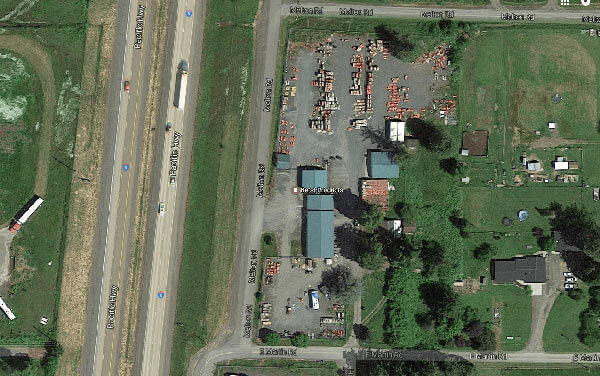If you have never used a Flail Mower, you need to re-think how you mow.
By definition, a flail mower uses banks of flails (or “knives”) instead of blades. A flail is a short piece of metal
that operates by beating the grass (flailing it) and breaking it off. At high speeds, the job is done quite efficiently.
Most of us are familiar with using a Rotary mower. Rotary mowers will cut going forwards, backwards or even
sideways. This is because on a rotary mower the blades are spinning parallel to the ground. As the blade spins it
cuts off the base of the grass or material and the material falls towards the ground. If the material or grass is tall,
as it falls it may be cut again. Normally the material being cut just falls below the cutting blade.
On a Flail mower the blades are spinning vertical to the ground and as the blades strike the material to be cut, the
grass or material is lifted and cut/chopped many more times before this material is ejected out the rear of the flail
mower. The material, you are cutting, is being suspended under the mowing deck, instead of just falling out of
the way. Flail mowers are sensitive to the density/volume of material the mower can feed and cut. Speed must be
matched to the task.
This brings us to the basic rules of using a flail mower.
Rule 1. You can only mow in a forward direction. If you must backup you must lift the mower deck as you
backup. When you are ready to again move forward, lower your flail mower and resume mowing in a
forward direction. Mowing in reverse will wrap the shaft and burn up the belts.
Rule 2. Always operate your Flail mower at tractor’s engine speed that provides 540 RPM PTO speed. Mower
Blade Tip speed is very important in maintaining the ability of the flail mower to lift the material it
is cutting. Operating at too low of tractor PTO speed will bog down the mower and cause the power
belts to slip and burn.
Rule 3. Always start your mowing project in the lowest gear available. Increase tractor forward speed until the
material exiting the back of the flail mower is not fully cut. Then slow down a little. You have determined
the maximum speed you can go to properly perform this job with your combination of tractor,
material and flail mower. Mowing at a speed that is too fast for the mower to properly mow will
cause the power belts to slip and burn.
A flail mower minimizes bunching and does not throw anything to the left or to the right. Our units feature rotors
with reverse rotation. This picks cut material up and discards material virtually where they were cut, just
behind the forward-moving machine. The limited trajectory of hit objects allows you to mow in areas with
heavy trash and where there might be bystanders.
Tips & Tricks
If the material is too high or thick too cut in one pass, even at minimum forward tractor speed, Top center hitch
link can be used to adjust cutting height. In normal mowing the top link should be adjust so the mower sits with
the front of edge of the mower slightly lifted. When necessary the mowers front edge may be lifted more by extending
the top hitch link. This will cause the mower to have larger area for the material to feed into the mower
and will cut the material at a higher level. Once this is done you can lower the flail mower deck to normal position
and cut your project a second time at the height desired.
If you need to cut woody materials you must have Hammer type blades installed. The “Y” grass blades stop short
of being able to cut anything woody larger than young saplings or small limbs. The hammers not only will cut
both brush and grass, but depending up on the size of the hammers available for the mower you have, hammer
blades can handle up to 4” diameter material. Because the hammers keep the material under the mower deck for a
longer time, they may slow the cutting of dense materials by a small percentage.


